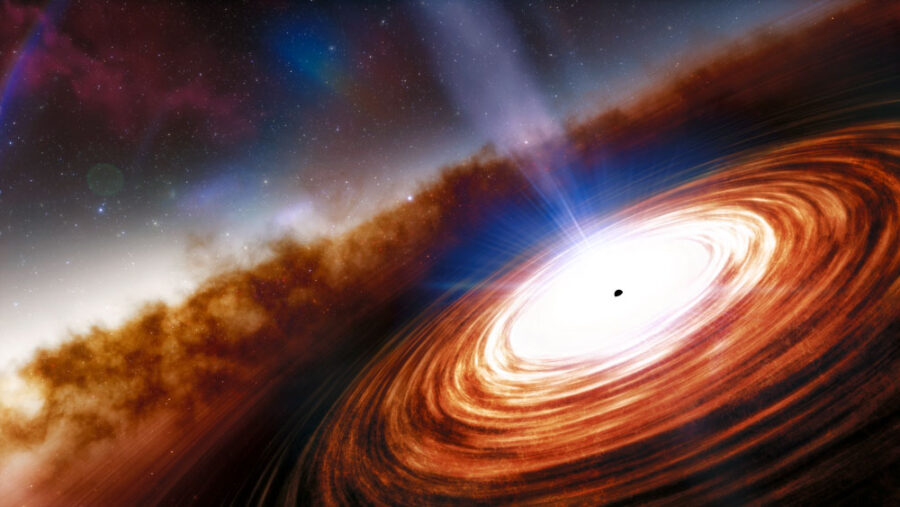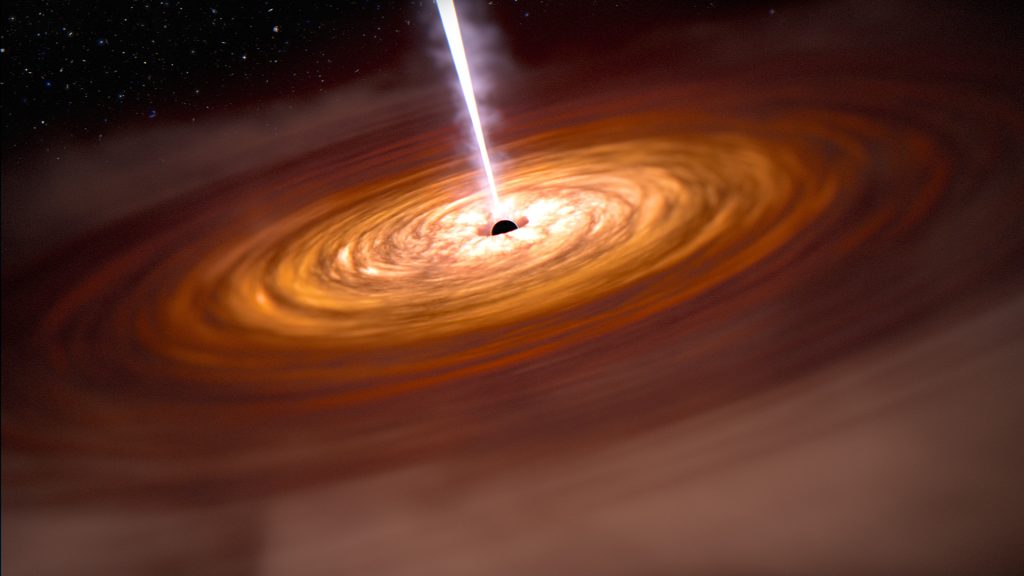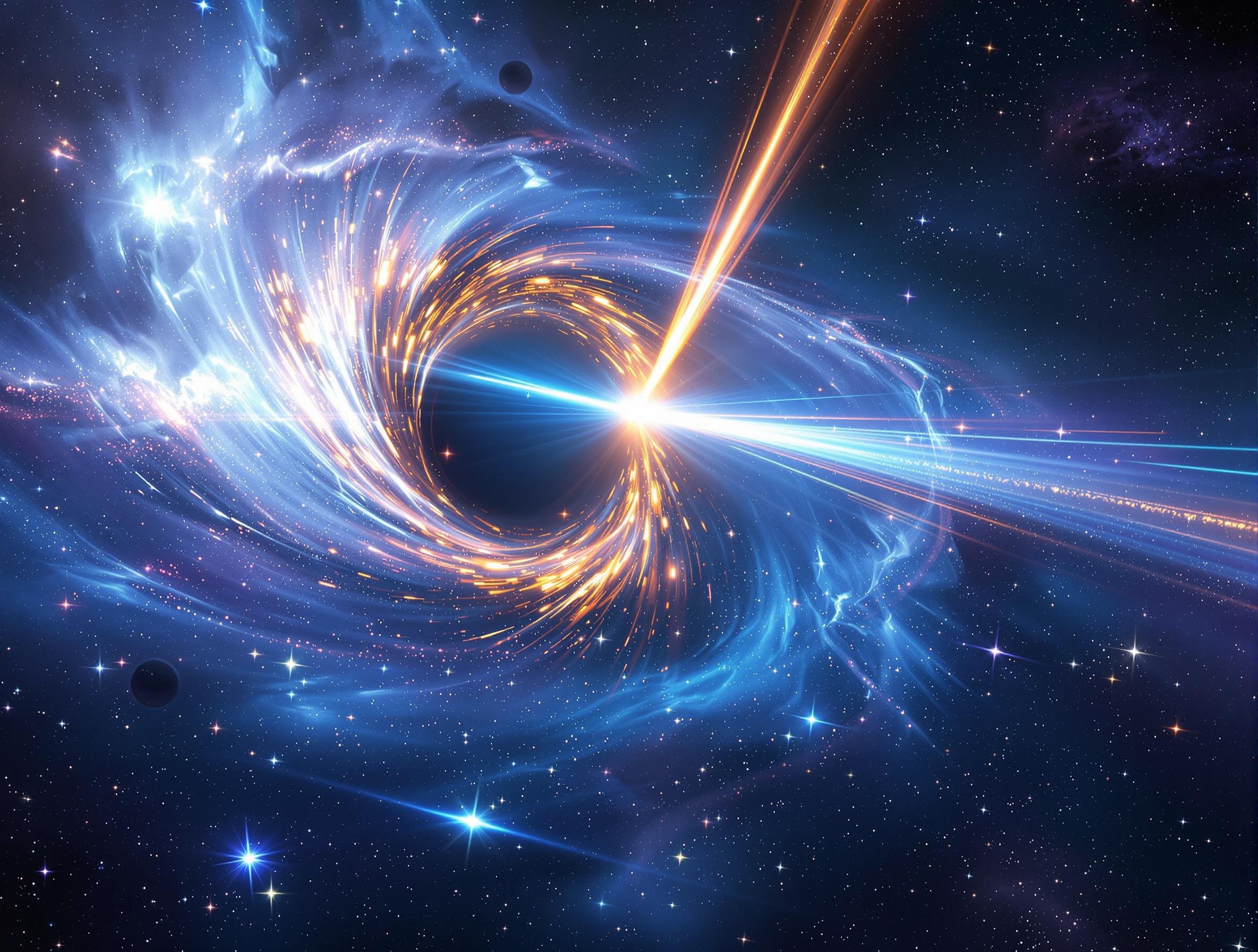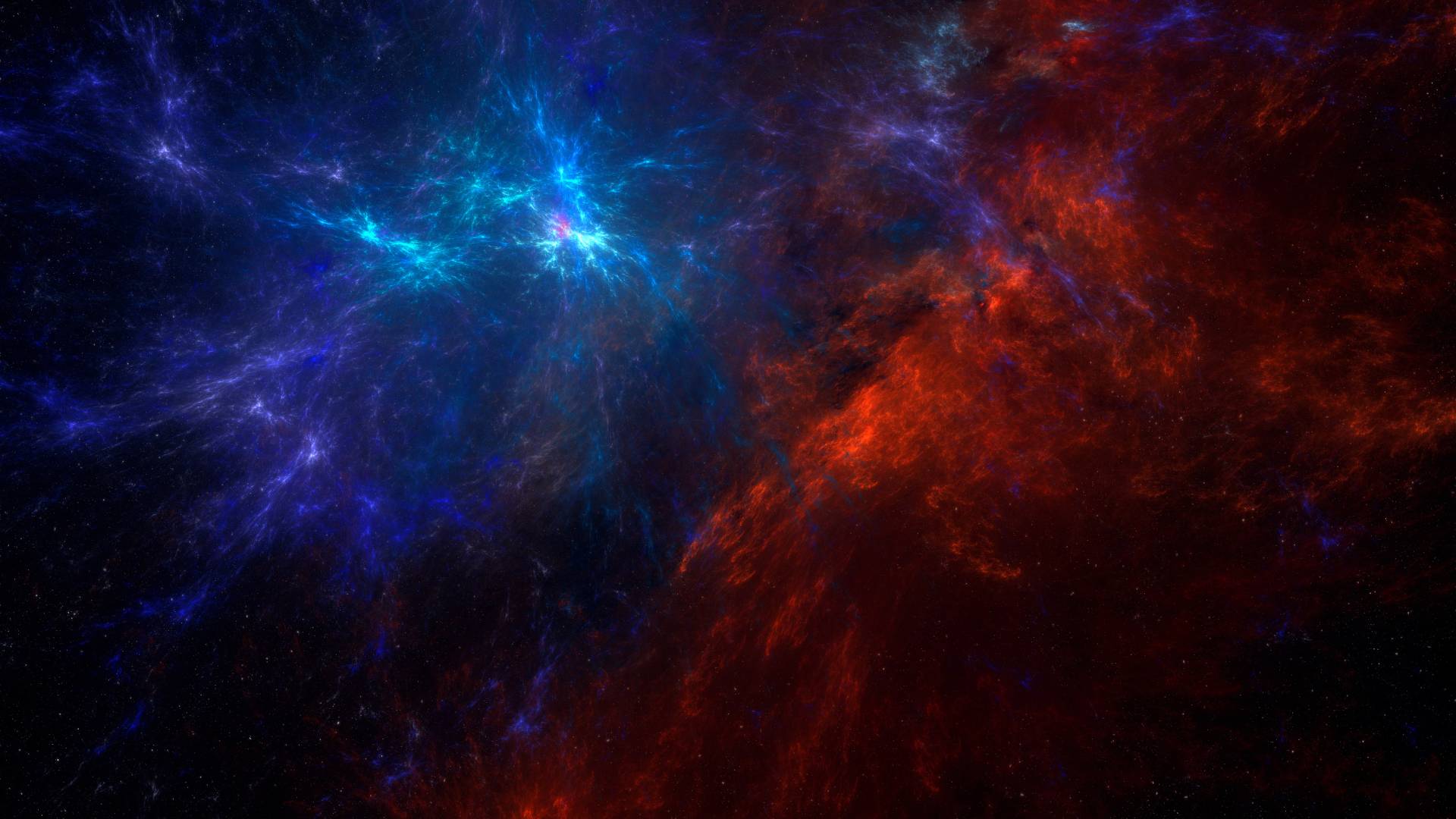Quasars, or “quasi-stellar radio sources,” are among the most luminous and enigmatic objects in the universe. These celestial powerhouses shine so brightly that they can outshine entire galaxies, making them visible across billions of light-years. But what exactly are quasars, and what makes them so radiant? This article explores the nature of quasars, their formation, their role in cosmic evolution, and the fascinating physics behind their extraordinary luminosity. Stay with Spaceyv
Understanding Quasars
Definition and Discovery
Quasars were first discovered in the 1960s when astronomers identified mysterious radio sources that appeared as faint, star-like points of light. However, when their spectra were analyzed, scientists found that these objects were located at astonishingly vast distances. This meant they had to be incredibly bright to be visible from Earth, leading to the realization that quasars are not stars but are instead powered by supermassive black holes at the centers of galaxies.

How Quasars Shine
Unlike ordinary galaxies, quasars are fueled by the immense gravitational pull of a supermassive black hole consuming surrounding gas and dust. As matter spirals toward the black hole, it forms an accretion disk, heating up due to friction and releasing immense amounts of energy. This energy, emitted across the electromagnetic spectrum—including visible light, radio waves, X-rays, and gamma rays—makes quasars the most luminous objects in the known universe.
The Structure of a Quasar
Supermassive Black Hole
At the heart of every quasar lies a supermassive black hole, typically millions to billions of times the mass of the Sun. Despite their extreme gravitational pull, black holes themselves do not emit light. Instead, the energy observed from quasars comes from the matter they consume.
Accretion Disk
The accretion disk is a swirling mass of gas and dust heated to extreme temperatures as it spirals into the black hole. This disk emits powerful radiation across multiple wavelengths, with some quasars appearing particularly bright in ultraviolet and X-ray light.
Relativistic Jets
Some quasars produce powerful jets of plasma that travel at nearly the speed of light. These jets, often aligned along the quasar’s axis of rotation, emit strong radio waves and can extend for thousands of light-years. They interact with surrounding space, influencing the evolution of galaxies and intergalactic environments.
Broad and Narrow Line Regions
Quasars also exhibit unique spectral characteristics. The “broad line region” consists of high-speed gas clouds orbiting close to the black hole, while the “narrow line region” contains slower-moving gas farther away. These features help astronomers understand the structure and dynamics of quasars.
The Role of Quasars in the Universe
Tracing Cosmic History
Because quasars are incredibly bright and can be observed from billions of light-years away, they serve as cosmic beacons, allowing astronomers to study the early universe. The light from the most distant quasars originated when the universe was less than a billion years old, offering valuable insights into its infancy.
Galactic Evolution
Quasars are believed to be a phase in the life cycle of galaxies. Many galaxies, including the Milky Way, harbor supermassive black holes at their centers. During periods of intense gas accretion, these black holes can become active and shine as quasars. Once their fuel depletes, they enter a dormant phase, leaving behind massive but inactive black holes.
Influence on Star Formation
Quasars can either trigger or suppress star formation in their host galaxies. The intense radiation and powerful jets they emit can heat and expel gas, preventing new stars from forming. Conversely, shockwaves from these jets can also compress gas clouds, leading to bursts of star formation.

The Most Famous Quasars
3C 273 – The First Identified Quasar
Located in the constellation Virgo, 3C 273 was the first quasar ever identified. It remains one of the brightest quasars visible from Earth, offering a key reference point for astronomers studying these enigmatic objects.
ULAS J1120+0641 – A Window Into the Early Universe
This quasar, observed at a redshift of 7.1, is one of the most distant known, providing a glimpse into the universe just 770 million years after the Big Bang. Its discovery has helped scientists refine models of early galaxy formation.
TON 618 – The Most Massive Quasar
TON 618 hosts one of the most massive known black holes, estimated to be over 66 billion solar masses. Its extreme luminosity exemplifies the incredible power of quasars.
The Future of Quasar Research
Next-Generation Telescopes
With advancements in observational technology, telescopes like the James Webb Space Telescope (JWST) and upcoming radio observatories will allow scientists to study quasars in unprecedented detail. These tools will help uncover how quasars evolve and their impact on cosmic structure.
Understanding Dark Matter and Energy
Quasars also serve as important tools for probing the universe’s large-scale structure. By mapping their distribution, astronomers can test theories about dark matter, dark energy, and the expansion of the universe.
Simulating Quasar Formation
Scientists use supercomputer simulations to model the formation and evolution of quasars. These simulations help refine our understanding of galaxy mergers, black hole growth, and the physics of accretion disks.
Conclusion
Quasars are extraordinary cosmic objects that illuminate the history of the universe. Powered by supermassive black holes, they serve as both astrophysical laboratories and cosmic signposts, helping astronomers study the distant past and the forces that shape galaxies. As technology advances, our understanding of quasars will continue to deepen, unlocking more secrets about the vast and dynamic universe we inhabit.
References
Quasars: Brightest Objects in the Universe



